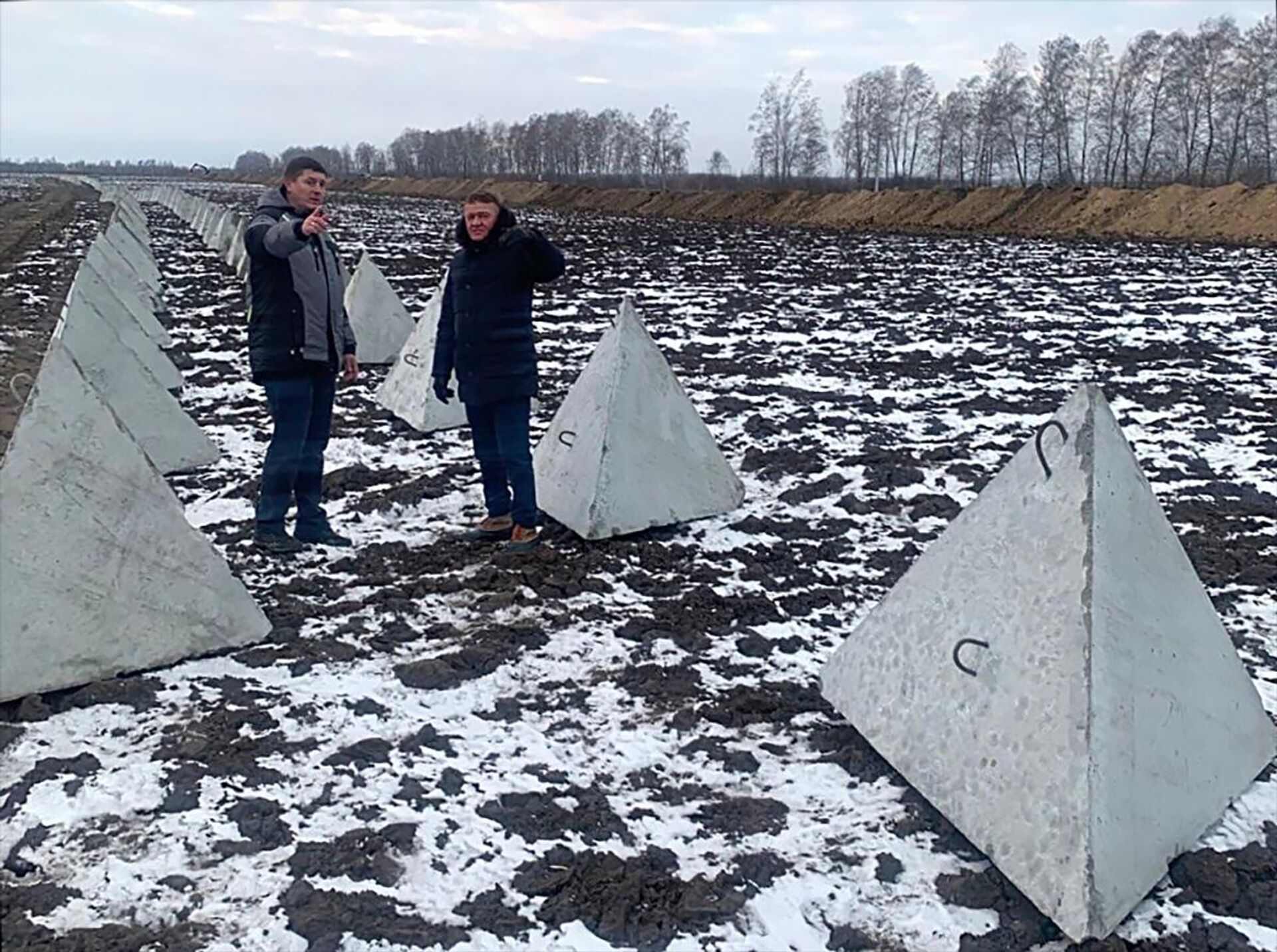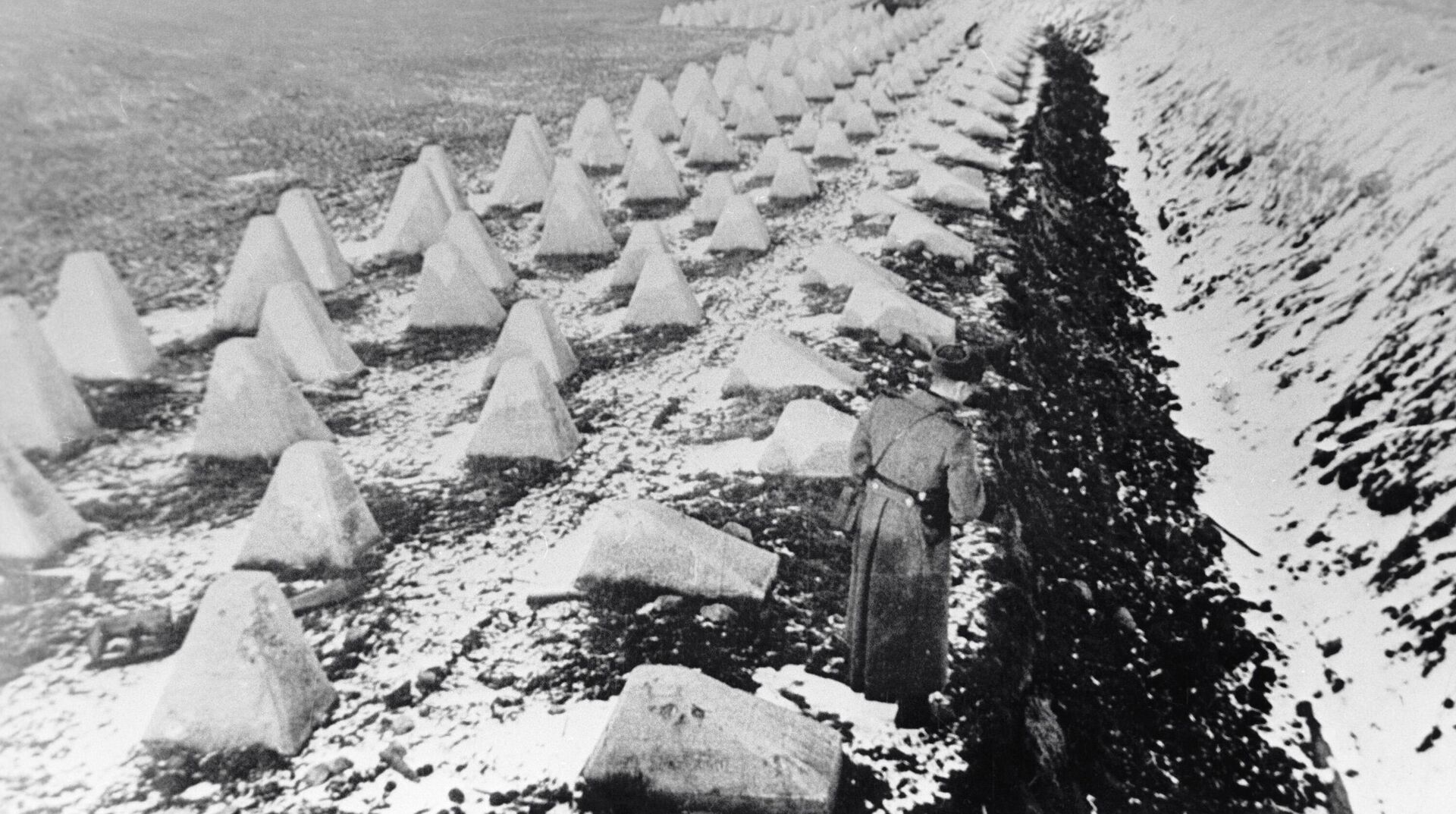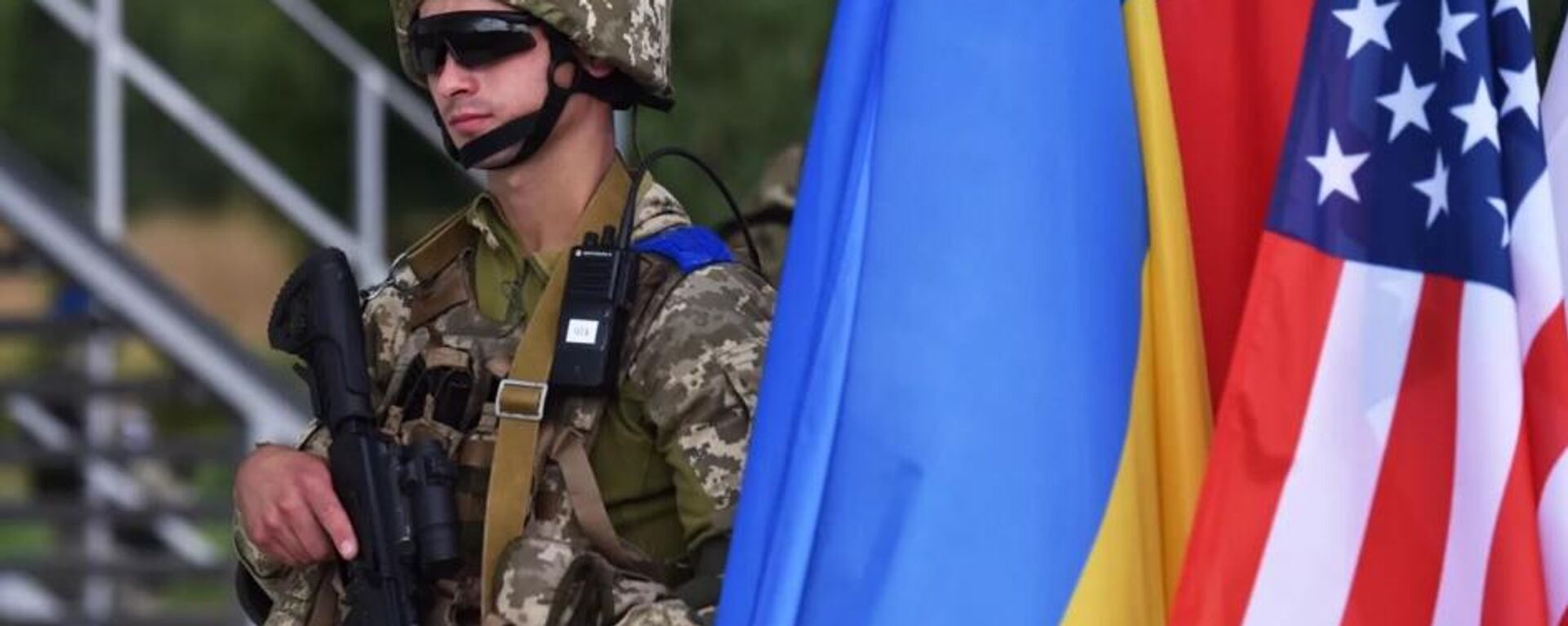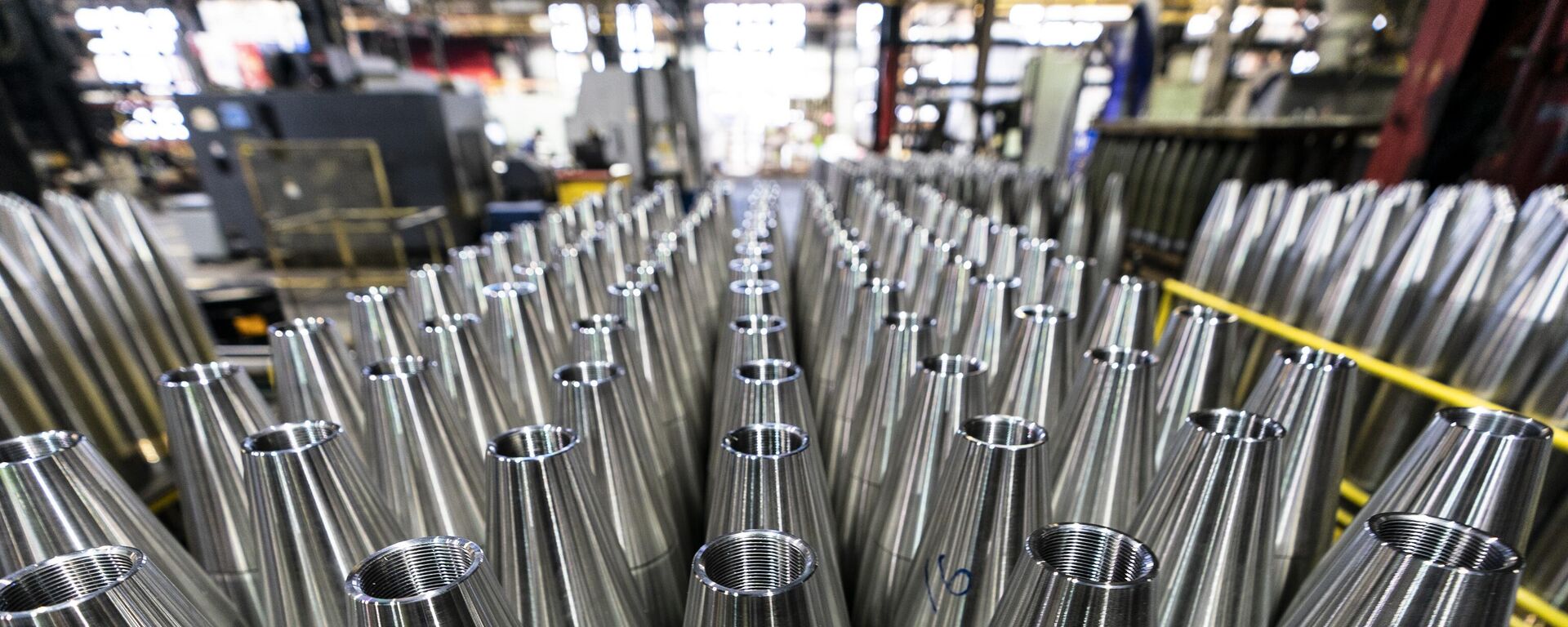https://sputnikglobe.com/20230906/what-is-russias-dragon-teeth-defense-1113154028.html
What is Russia's Dragon Teeth Defense?
What is Russia's Dragon Teeth Defense?
Sputnik International
The defense has impeded Ukraine's advance along the front line, despite being earlier mocked by the Kiev regime and its Western patrons.
2023-09-06T15:59+0000
2023-09-06T15:59+0000
2023-09-06T15:59+0000
us
russia's special operation in ukraine
nato
challenger 2
patriot
ukraine
kiev
russia
ukrainian counteroffensive attempt
defense
https://cdn1.img.sputnikglobe.com/img/07e7/09/06/1113153035_0:86:1400:874_1920x0_80_0_0_4e4122fb8e6d774eebddb4be1ef52ae7.jpg
The botched nature of Ukraine's counteroffensive has largely been blamed on Moscow's elaborate network of fortifications erected last fall along the frontline to protect the territory which integrated into Russia following September referendums. "Dragon teeth" barriers, "hedgehogs" and minefields are sending a clear signal to NATO and its Ukrainian proxies that Russia is here to stay and that the Kiev regime won't get an inch of Russia's soil.What are Dragon Teeth?Dragon's teeth – sometimes also referred to as "devil's teeth" in the Western press – are anti-tank pyramid-shaped concrete defense obstacles. The height of one "tooth" is from 90 to 120 cm (around 4 feet).Are They Effective Against Tanks?Dragon's teeth have repeatedly proven to be highly effective against tanks. Still, one should bear in mind that, first, these defensive obstacles are used as part of a larger sophisticated structure; second, they should be installed the right way and in the right place.Prior to the failing counteroffensive in late May, the Ukrainian media shared footage of the UK-made Challenger-2 tank easily wiping chaotically scattered dragon's teeth away. An audio track attached to the video goes: "I'm on the highway to hell". The three-month-long counteroffensive attempt proved this line to be prophetic: having failed to reach its objectives the Ukrainian military has lost over 66,000 personnel and 7,600 weapons. The image of a burning Challenger 2 tank near Russia's defensive line this week came as the cherry on the cake.How Do Dragon's Teeth Work?Russian military observers list five conditions for the successful use of dragon's teeth:First, the obstacles should be made of special reinforced concrete.Second, it is necessary to carefully choose the place of their installation: it must be a true trap, i.e. a place that tanks cannot simply bypass from the flanks.Third, installing one row of dragon's teeth wouldn't make any sense. The shards should be placed in several rows and in a special order to make it difficult to overcome. Moreover, the "teeth" could be of different shapes depending on the place of their installation.Fourth, these anti-tank obstacles are typically hidden from the enemy and carefully camouflaged. It would be good if the enemy tanks suddenly stumble upon this obstacle in front of them and have no choice but to try to overcome them.Fifth, installing dragon's teeth is just half the story: the gaps between the obstacles must be mined. The exact coordinates of the installation should be transferred to anti-tank units in advance, so that they could immediately unleash hell upon the enemy tanks once they slow down while trying to overcome the defenses.When Were Dragon's Teeth Used First?Dragon's teeth fortifications were widely used during the Second World War to impede the mobility of main battle tanks and mechanized infantry. The main task of this defensive structure was to slow down the advance of the enemy's armored vehicles, channel them into a killing zone, and then destroy them with anti-tank weapons.Dragon's teeth were used by several European armies. The Germans extensively employed them on the Siegfried Line – a line of defenses built during the 1930s. The German defensive system stretched for more than 630 km (390 mi) with more than 18,000 bunkers, tunnels and tank traps.France also used large numbers of dragon’s teeth in the construction of the Maginot Line, located opposite Germany's Siegfried Line.The Brits installed dragon's teeth in 1940–1941 in order to strengthen the country's coastal defenses against a possible German invasion. Some can still be found in the UK – for instance, above Studland Beach in Dorset.What Other Fortifications Has Russia Employed in Ukraine?The Western media cites satellite imagery showing multiple layers of Russian fortifications, which are sometimes 20 kilometers deep and roughly 2,000 kilometers long, running from Russia’s border with Belarus to the Dnepr Delta.Western think tanks name these fortifications as the most extensive defensive works in Europe since the Second World War. The Russian defenses consist of a network of trenches, minefields, razor wire, metal anti-tank barricades known as "hedgehogs", the now-famous dragon’s teeth, and artillery positions.As per Western observers, the most fortified is the Zaporozhye region, followed by Kherson, Donetsk, and Lugansk republics. Crimea has also been fortified. The Zaporozhye defensive system consists of around three subsystems; the Kherson defensive system also protects approaches to Crimea. The Donetsk front combines both new and old defensive fortifications, while "the construction of Luhansk’s defensive system is less clear from satellite imagery."Are Russia's Fortifications Only to Blame for the Botched Counteroffensive?While Western media has largely blamed the Kiev regime's failures on Russia's formidable defense line, a number of reports indicate other serious Ukrainian military flaws. In particular, Ukrainians are criticizing NATO's training which was not only "too little, too late" but in many respects ineffective, starting from the shortened period of training to Western war practices per se. According to Sputnik's interlocutors, it has turned out that NATO's tactics don't actually work without the dominance in the air.NATO-grade wonder weapons also proved to be not as efficient as they were previously advertised. Germany's Leopard tanks and British Challengers turned out to be difficult to maneuver on Ukraine's terrain and problematic to maintain. US-made Patriots and other air defense systems do not shield the Ukrainian infantry and equipment from heavy losses and are especially vulnerable to Russia's hypersonic weapons, such as the Kinzhal missile. Western missiles and drones have also been detected and intercepted by Russia failing to inflict heavy damage on its positions. On top of that, NATO countries cannot produce enough 155 mm shells to satiate Ukraine's needs. None of NATO's conventional systems (including the F-16 jet fighters which are expected to be delivered to Ukraine soon) would become a "magic bullet" against Russia, according to Western military analysts.The Ukrainian counteroffensive attempt has failed to meet the West's expectations, triggering skepticism among Americans and Europeans with regard to future military supplies and financial assistance for Kiev.
https://sputnikglobe.com/20230905/uk-made-challenger-2-tank-got-first-taste-of-combat-in-ukraine---and-failed-1113138090.html
https://sputnikglobe.com/20230905/who-would-pay-for-it-ukraine-has-no-path-to-long-range-weapons-despite-ministers-boast-1113138827.html
https://sputnikglobe.com/20230803/ukrainians-trashed-insufficient-us-military-tactics-amid-failed-counteroffensive-1112372932.html
https://sputnikglobe.com/20230804/ukraines-attrition-rate-suggests-counteroffensive-is-over-1112393002.html
https://sputnikglobe.com/20230826/no-biden-cant-wage-forever-war-in-ukraine-1112913227.html
ukraine
kiev
russia
Sputnik International
feedback@sputniknews.com
+74956456601
MIA „Rossiya Segodnya“
2023
News
en_EN
Sputnik International
feedback@sputniknews.com
+74956456601
MIA „Rossiya Segodnya“
Sputnik International
feedback@sputniknews.com
+74956456601
MIA „Rossiya Segodnya“
dragon's teeth, what is dragon teeth, russia's security line, russia's fortifications in ukraine, russia's dragon's teeth, are dragon teeth effective, what are dragon teeth in ukraine, ukraine conflict, war in ukraine, russian anti-tank defenses, ukrainian counteroffensive, ukrainian failed counteroffensive, ukrainian army bogged down
dragon's teeth, what is dragon teeth, russia's security line, russia's fortifications in ukraine, russia's dragon's teeth, are dragon teeth effective, what are dragon teeth in ukraine, ukraine conflict, war in ukraine, russian anti-tank defenses, ukrainian counteroffensive, ukrainian failed counteroffensive, ukrainian army bogged down
What is Russia's Dragon Teeth Defense?
The Russian defense has impeded Ukraine's advance along the front line, despite being earlier mocked by the Kiev regime and its Western patrons.
The botched nature of Ukraine's counteroffensive has largely been blamed on Moscow's elaborate network of fortifications erected last fall along the frontline to protect the territory which integrated into Russia following September referendums.
"Dragon teeth" barriers, "hedgehogs" and minefields are sending a clear signal to NATO and its Ukrainian proxies that Russia is here to stay and that the Kiev regime won't get an inch of Russia's soil.
Dragon's teeth – sometimes also referred to as "devil's teeth" in the Western press – are anti-tank pyramid-shaped concrete defense obstacles. The height of one "tooth" is from 90 to 120 cm (around 4 feet).
Are They Effective Against Tanks?
Dragon's teeth have repeatedly proven to be highly effective against tanks. Still, one should bear in mind that, first, these defensive obstacles are used as part of a larger sophisticated structure; second, they should be installed the right way and in the right place.
Dragon's teeth are not a fence, they are a special anti-tank trap: they don't just hinder the enemy tanks' raid, but create the illusion that this obstacle is easy to overcome. If the dragon's teeth are made and installed correctly, the enemy tanks, having overcome the first line of concrete defenses, will not be able to move either forward or backward. They will get stuck and become an easy target for artillery and other anti-tank weapons.
Prior to the failing counteroffensive in late May, the Ukrainian media shared footage of the UK-made Challenger-2 tank easily wiping chaotically scattered dragon's teeth away. An audio track attached to the video goes:
"I'm on the highway to hell". The three-month-long counteroffensive attempt proved this line to be prophetic: having failed to reach its objectives the Ukrainian military has lost over
66,000 personnel and
7,600 weapons. The image of a
burning Challenger 2 tank near Russia's defensive line this week came as the cherry on the cake.
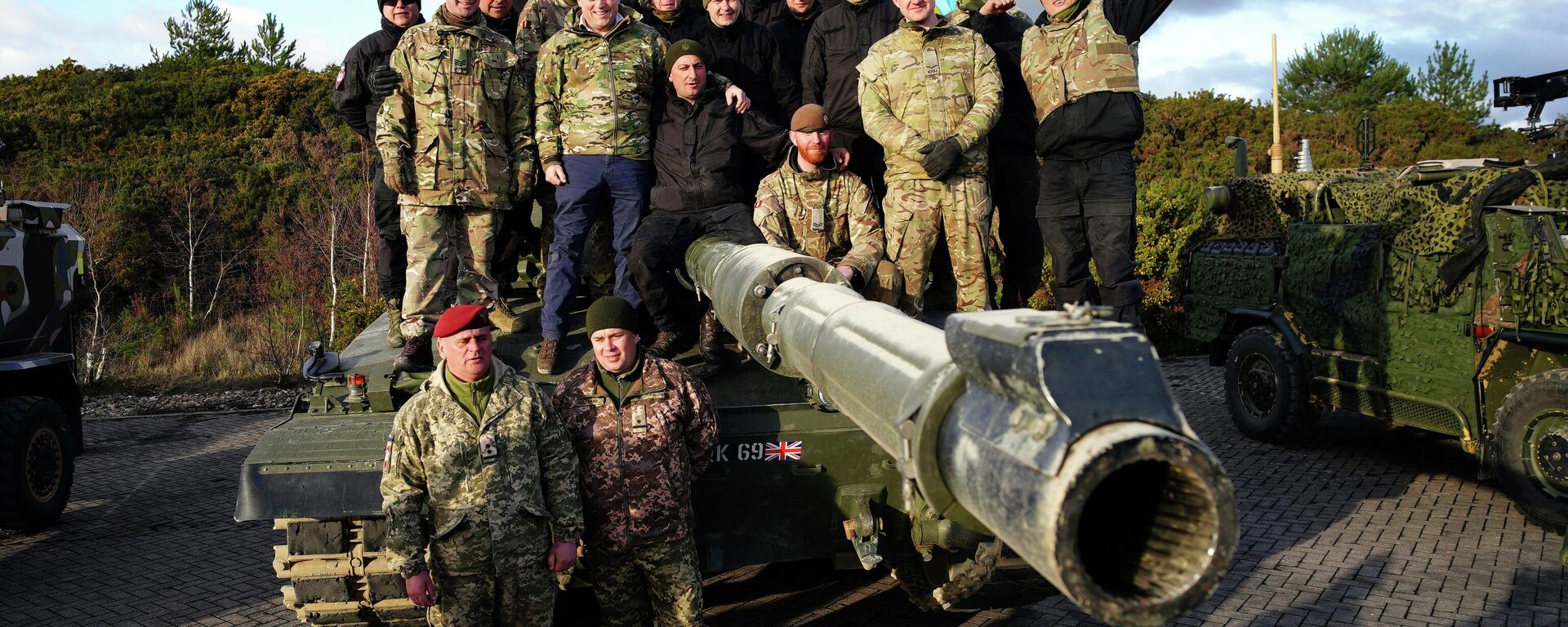
5 September 2023, 18:50 GMT
How Do Dragon's Teeth Work?
Russian military observers list five conditions for the successful use of dragon's teeth:
First, the obstacles should be made of special reinforced concrete.
Second, it is necessary to carefully choose the place of their installation: it must be a true trap, i.e. a place that tanks cannot simply bypass from the flanks.
Third, installing one row of dragon's teeth wouldn't make any sense. The shards should be placed in several rows and in a special order to make it difficult to overcome. Moreover, the "teeth" could be of different shapes depending on the place of their installation.
Fourth, these anti-tank obstacles are typically hidden from the enemy and carefully camouflaged. It would be good if the enemy tanks suddenly stumble upon this obstacle in front of them and have no choice but to try to overcome them.
Fifth, installing dragon's teeth is just half the story: the gaps between the obstacles must be mined. The exact coordinates of the installation should be transferred to anti-tank units in advance, so that they could immediately unleash hell upon the enemy tanks once they slow down while trying to overcome the defenses.
When Were Dragon's Teeth Used First?
Dragon's teeth fortifications were widely used during the Second World War to impede the mobility of main battle tanks and mechanized infantry. The main task of this defensive structure was to slow down the advance of the enemy's armored vehicles, channel them into a killing zone, and then destroy them with anti-tank weapons.
Dragon's teeth were used by several European armies. The Germans extensively employed them on the Siegfried Line – a line of defenses built during the 1930s. The German defensive system stretched for more than 630 km (390 mi) with more than 18,000 bunkers, tunnels and tank traps.
France also used large numbers of dragon’s teeth in the construction of the Maginot Line, located opposite Germany's Siegfried Line.
The Brits installed dragon's teeth in 1940–1941 in order to strengthen the country's coastal defenses against a possible German invasion. Some can still be found in the UK – for instance, above Studland Beach in Dorset.

5 September 2023, 19:47 GMT
What Other Fortifications Has Russia Employed in Ukraine?
The Western media cites satellite imagery showing multiple layers of Russian fortifications, which are sometimes 20 kilometers deep and roughly 2,000 kilometers long, running from Russia’s border with Belarus to the Dnepr Delta.
Western think tanks name these fortifications as the most extensive defensive works in Europe since the Second World War. The Russian defenses consist of a network of trenches, minefields, razor wire, metal anti-tank barricades known as "hedgehogs", the now-famous dragon’s teeth, and artillery positions.
As per Western observers, the most fortified is the Zaporozhye region, followed by Kherson, Donetsk, and Lugansk republics. Crimea has also been fortified. The Zaporozhye defensive system consists of around three subsystems; the Kherson defensive system also protects approaches to Crimea. The Donetsk front combines both new and old defensive fortifications, while "the construction of Luhansk’s defensive system is less clear from satellite imagery."
Are Russia's Fortifications Only to Blame for the Botched Counteroffensive?
While Western media has largely blamed the Kiev regime's failures on Russia's formidable defense line, a number of reports indicate other serious Ukrainian military flaws. In particular, Ukrainians are criticizing
NATO's training which was not only "too little, too late" but in many respects ineffective, starting from the shortened period of training to Western war practices per se. According to Sputnik's interlocutors, it has turned out that NATO's tactics don't actually work
without the dominance in the air.
NATO-grade wonder weapons also proved to be not as efficient as they were previously advertised. Germany's Leopard tanks and British Challengers turned out to be difficult to maneuver on Ukraine's terrain and problematic to maintain.
US-made Patriots and other
air defense systems do not shield the Ukrainian infantry and equipment from heavy losses and are especially vulnerable to Russia's hypersonic weapons, such as the Kinzhal missile. Western missiles and drones have also been detected and intercepted by Russia failing to inflict heavy damage on its positions. On top of that, NATO countries cannot produce
enough 155 mm shells to satiate Ukraine's needs. None of NATO's conventional systems (including the
F-16 jet fighters which are expected to be delivered to Ukraine soon) would become
a "magic bullet" against Russia, according to Western military analysts.
The Ukrainian counteroffensive attempt has failed to meet
the West's expectations, triggering skepticism among Americans and Europeans with regard to future military supplies and financial assistance for Kiev.
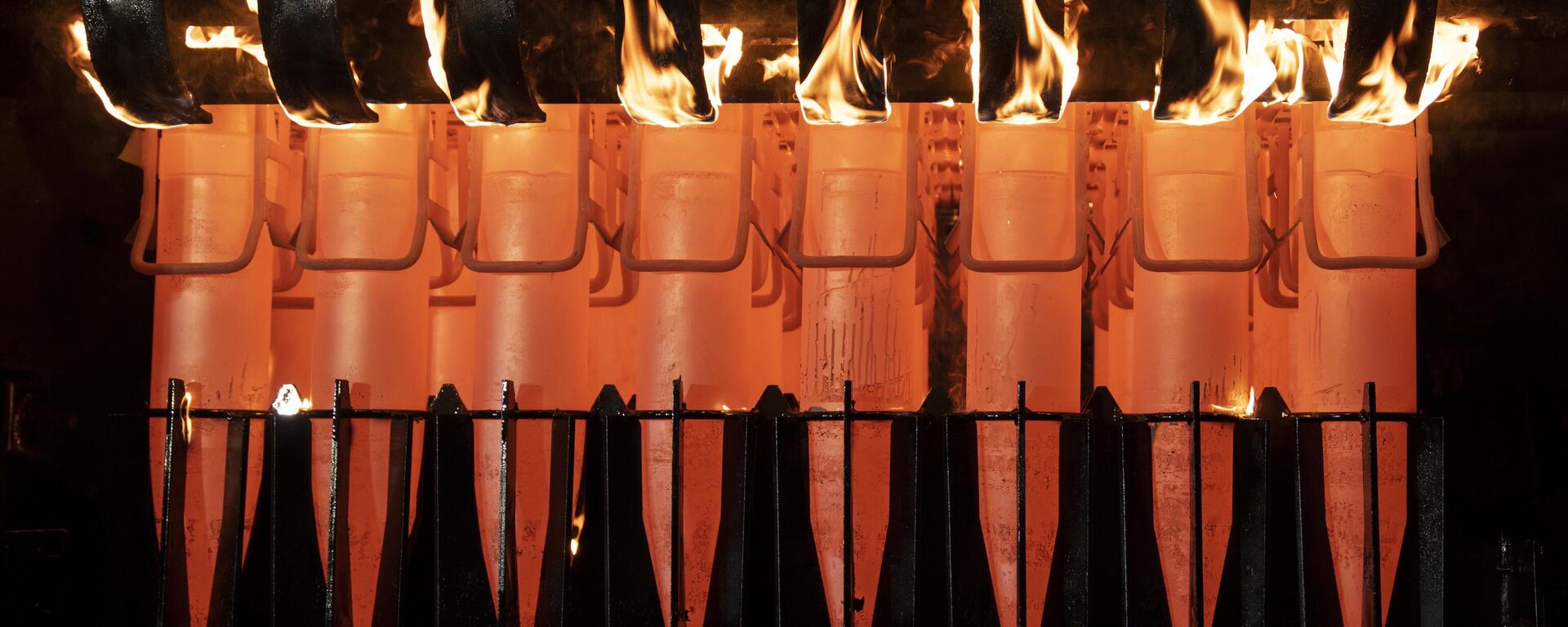
26 August 2023, 18:25 GMT

